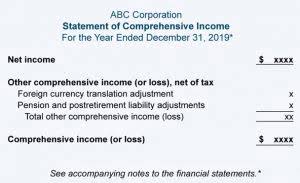
As with all other ratios, the trend of the total debt-to-total assets ratio should be evaluated over time. This will help assess whether the company’s financial risk profile is improving or deteriorating. For example, a trend of increasing leverage use might indicate that contra asset account a business is unwilling or unable to pay down its debt, which could signify issues in the future. It measures the proportion of a company’s total assets that are financed by debt, giving it broad relevance to both the solvency and liquidity of the firm. Businesses with low debt ratios are generally in better financial health. They have a lower risk of insolvency because they aren’t heavily reliant on borrowed money to finance their operations or fund growth.
- While a higher debt ratio is not necessarily a cause for immediate concern, it can indicate increased financial risk and potential difficulties in meeting debt obligations.
- In time, the growing dependency on debt could cause an inability to meet the company’s existing loan obligations.
- The debt ratio is a simple financial indicator that represents a debt to capital.
- By using various debt evaluation ratios, lenders and investors can gain a more accurate picture of a company’s financial health.
- These conditions can affect the company’s ability to service its debts significantly.
Negative debt-to-equity ratio
- This company is relatively known for carrying a high degree of debt on its balance sheet.
- An accurate measure of these components produces a clear picture of your financial health and ensures you maintain the right level of financial leverage for growth and stability.
- Determining a ‘good’ debt to assets ratio depends on the industry in which a company operates.
- A savvy investor might look for companies with moderate debt ratios, which balance the benefits of leverage with the risks of excessive debt.
- They haven’t taken on too much debt relative to their equity and would be a more attractive option to lenders or investors than other similar stores with a higher D/E ratio.
- There is our industry benchmarking calculated using US SEC data, where you can find average values for debt ratios.
- By understanding these examples, you gain practical insight into how debt ratio calculations can vary based on a company’s financial structure and debt levels.
DE ratio below 1 is generally considered good for the financial health of the https://www.bookstime.com/ company. Companies in some sectors, for example, utilities, consumer staples, and banks, have assets that typically lead to more than one debt and equity value, resulting in a high D/E ratio. A ratio higher than 0.5 or 50% could imply that the company is taking on too much debt and may be at risk of defaulting on its loans. While mortgage lenders prefer a debt-to-income ratio below 36%, many auto refinance lenders have a maximum of 50% — others don’t have a maximum at all.
- One significant shortcoming of the debt ratio is that it does not factor in current market conditions.
- These ratios provide insights into your leverage and financial stability.
- Interpreting whether a debt ratio is healthy or unhealthy depends on various factors such as the industry, business model, and economic conditions.
- From the result above, we can see that the utility company has taken the somewhat conservative approach of not using too much leverage to finance the assets.
- Debt ratio is a measurement that indicates how much leverage a company uses to finance its operation by using debt instead of its truly owned capital or equity.
- A company with a well-managed debt ratio can maintain profitability and stable cash flows.
TYPES OF DEBT RATIOS:

A company’s increasing D/E ratio e.g., could affect its ability to secure additional financing. In time, the growing dependency on debt could cause an inability to meet the company’s existing loan obligations. Persistently high D/E ratios could trigger a loan default or bankruptcy scenario.

What the Total Debt-to-Total Assets Ratio Can Tell You

You can calculate the debt ratio of a company from its financial statements. Whether or not it’s a good ratio depends on contextual factors; there is no universal number. Let’s take a look at what these ratios mean, what the variations are, and how they’re used by corporations.
Investors:
Remember that the debt ratio is a starting point, not an end-all in the financial analysis process. Effectively managing debt ratio is essential for maintaining financial stability, reducing risk, and optimizing capital structure. Let’s explore several strategies that companies a debt ratio of 0.5 indicates: can employ to manage their debt ratios proactively.